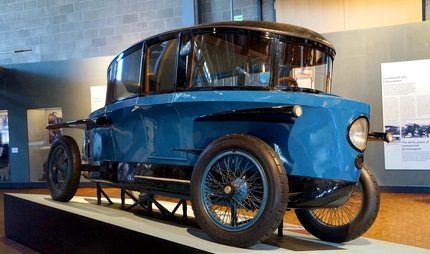
Museum Kesselhaus Herzberge
History of Technology and Medicine
The Kesselhaus still holds the massive boilers in their original location, as well as components and technical and office equipment from 1893 to 1988. A permanent exhibition about the hospital’s architect Hermann Blankenstein is also on hand. The history of medicine displays tell the story of the hospital and the former sanatorium at this site. Artists are also invited to hold showings in the Blankensteinsaal, but there are works of art to be discovered all over the campus.
The Kesselhaus is part of the listed Königin Elisabeth Herzberge (KEH) hospital campus in Berlin’s Lichtenberg district. Both the campus and the Kesselhaus (boiler plant) with its massive technical facilities are a part of Berlin’s rich industrial culture of the past 200 years.
The extensive grounds were built in the popular pavilion style of the era with a Neo-Renaissance design made of red and yellow bricks and is surrounded by the beautiful Herzberge Park. Until 2007, the beautifully landscaped park had been a rather wild mix of industrial wasteland, shops, apartments, and green areas.
Agrarbörse Deutschland Ost e.V. together with Lichtenberg district council, has since initiated a whole series of projects to redevelop the land into a modern urban natural landscape, resulting in a unique biotope all its own. Children especially look forward to seeing the herd of black Pommeranian Coursewool sheep that graze the park on a regular basis.
For more than a century, the boiler plant, built between 1889 and 1893 by city architect Hermann Blankenstein, supplied the adjacent hospital with heating, hot water, and electricity (until 1925). Since it is now no longer needed for this purpose, the staff at the KEH hospital committed to the preservation and conversion of the building.
After three years of extensive refurbishment, a museum was opened there in September 2003. The Kesselhaus still holds the massive boilers in their original location, as well as components and technical and office equipment from 1893 to 1988. A permanent exhibition about the hospital’s architect Hermann Blankenstein is also on hand. The history of medicine displays tell the story of the hospital and the former sanatorium at this site. Artists are also invited to hold showings in the Blankensteinsaal, but there are works of art to be discovered all over the campus.
GDR charm around the Helene-Weigel-Platz
All around Helene-Weigel-Platz, the prefabricated tower blocks are up to 21 storeys high. Take a stroll through the area around Helene-Weigel-Platz after visiting the Kesselhaus : shopping arcades, a large swimming baths with sauna and the historic town hall are all nearby.
You can find out more about Berlin' sneighbourhoods on our Going Local Berlin map.
Opening hours
| Tue: 2-6pm, Thu: 2-6pm |
|---|
| Tuesday and Thursday 14.00 to 18.00 | |








